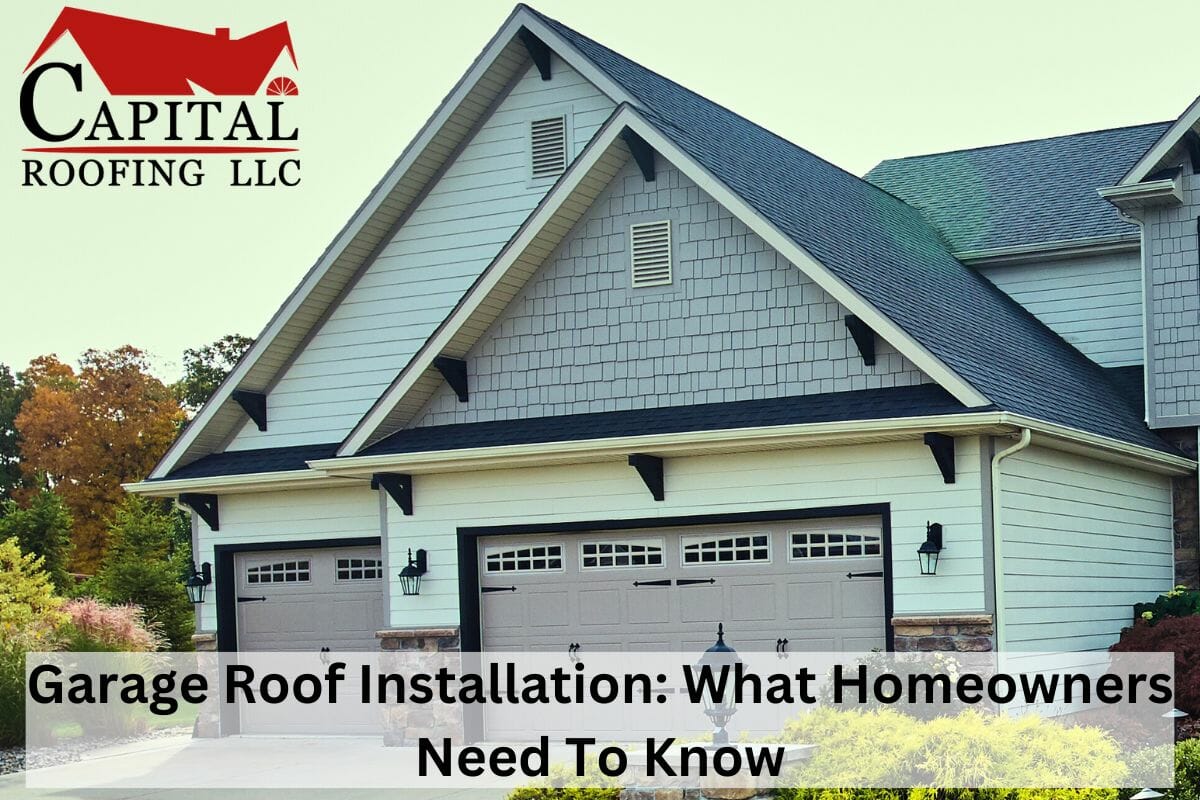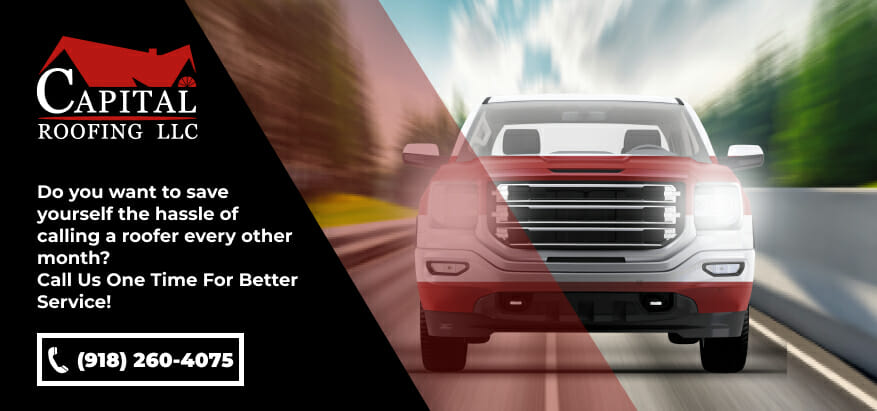A damaged roof should be handled correctly to ensure none of your belongings are harmed in the future. This also applies to your garage, which can be prone to leaks as there’s no attic in place to offer additional protection. If you are looking for a new garage roof, it’s crucial to understand the relevant details to make safe and cost-effective decisions.
At Capital Roofing, we aim to help homeowners by sharing our roofing knowledge and expertise. In this guide, we’ll explain the following details about garage roof installation:
- Should a garage roof be flat or pitched?
- Suitable roof designs for your garage
- Types of roofing materials for garages, and which one you should choose
- The cost of replacing your garage roof
After reading this guide, you will be more confident about the decisions you make for your re-roofing project.
Flat vs. Pitched Roofs: Which One is Better for Your Garage?
When you are re-roofing a garage, there are two primary options to consider: flat and pitched roofs. Your decision should depend on certain factors, such as your local climate, exterior architecture, and budget.
When to Choose a Flat Garage Roof?
Flat roofs are suitable for small garages and areas with a mild climate. Flat garage roofs are generally made of metal panels or single-ply roofing systems (PVC or EPDM). However, flat roofs are more prone to leaks and have a shorter lifespan than pitched roofs. If you live in a storm- or hail-prone area, flat roofs may not be the best choice for your garage roof.
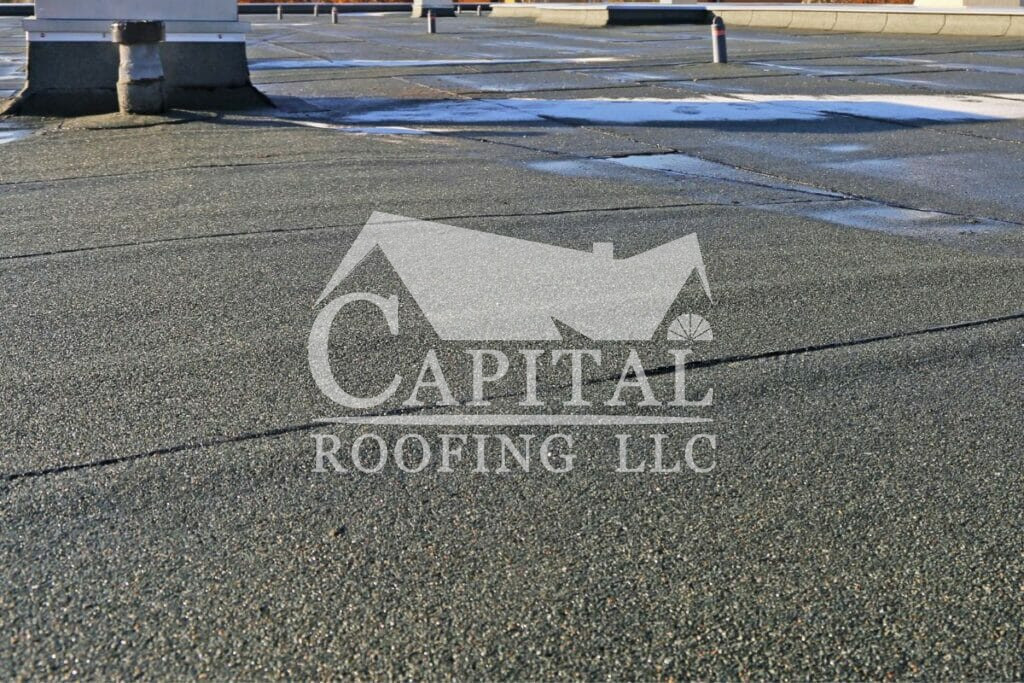
When to Choose a Pitched Garage Roof
For areas with fierce weather conditions and garages that house large vehicles, it’s better to have a pitched roof. Pitched roofs are better at shedding snow and water and can also offer more protection against high winds and hail.
The most suitable and cost-effective materials for a pitched garage roof include asphalt shingles, wood shakes, and metal panels. For a new garage roof, you can choose the same material and color as your main roof or create a pleasing color combination with a different shingle color.
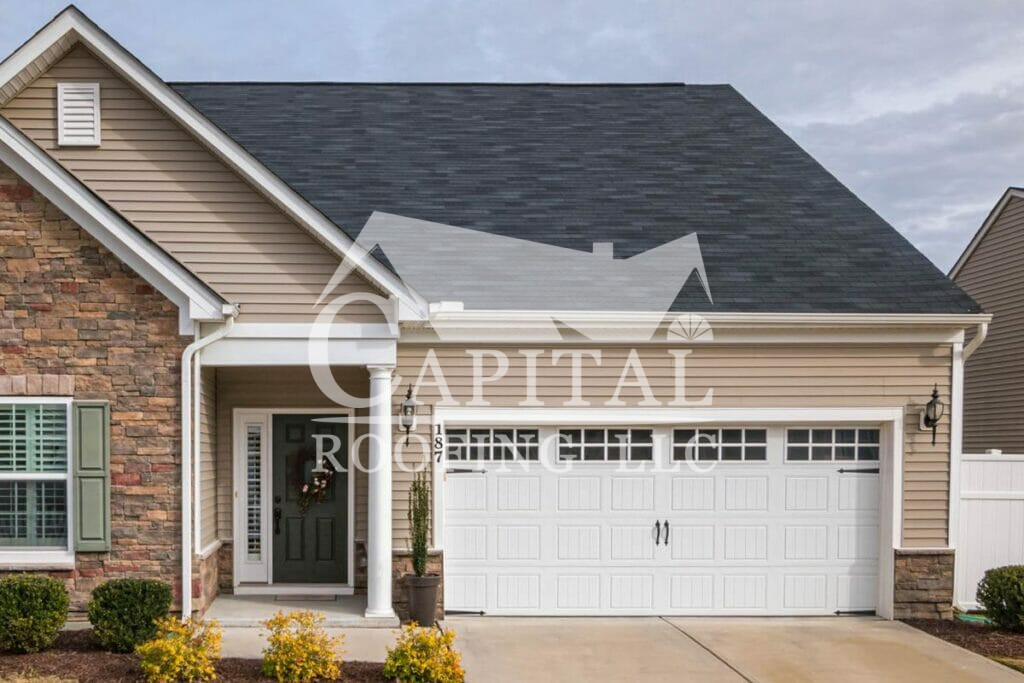
Making a Choice
It’s important to note that a pitched roof may initially cost more than a flat roof, but the total cost depends on the quality of the roofing materials, installation, and maintenance. Your final decision should be made after considering your area’s climate, your garage’s size, and the overall cost of the project. Resorting to cheap measures may cost you more in the long run as you may need to repair and replace the roof more often.
After you’ve selected the type of roof, the next step is to decide on the design.
Garage Roof Designs
Garage roof installation is relatively easier than re-roofing a home, so you have plenty of roof designs at your fingertips. For example, a flat roof may not seem like the right option until you choose a specific design, such as a rooftop deck.
In the case of a pitched roof, you have the freedom to choose from a plethora of patterns, including common designs like hip, gambrel, and lean-to.
Terrace Design
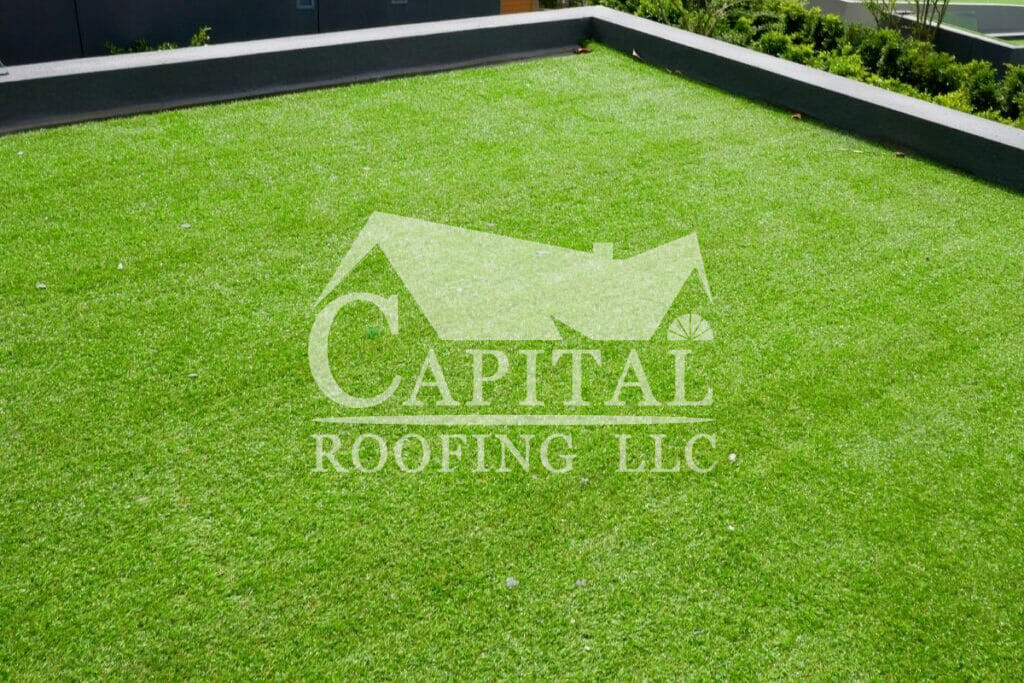
If you opt for a flat roof, you can add a rooftop deck or garden to create a unique and functional space. However, it’s important to note that these designs may require additional structural support and waterproofing measures to prevent leaks and damage. You may also need to take steps to protect the terrace during extreme weather conditions and unexpected hailstorms.
Solar Roofing
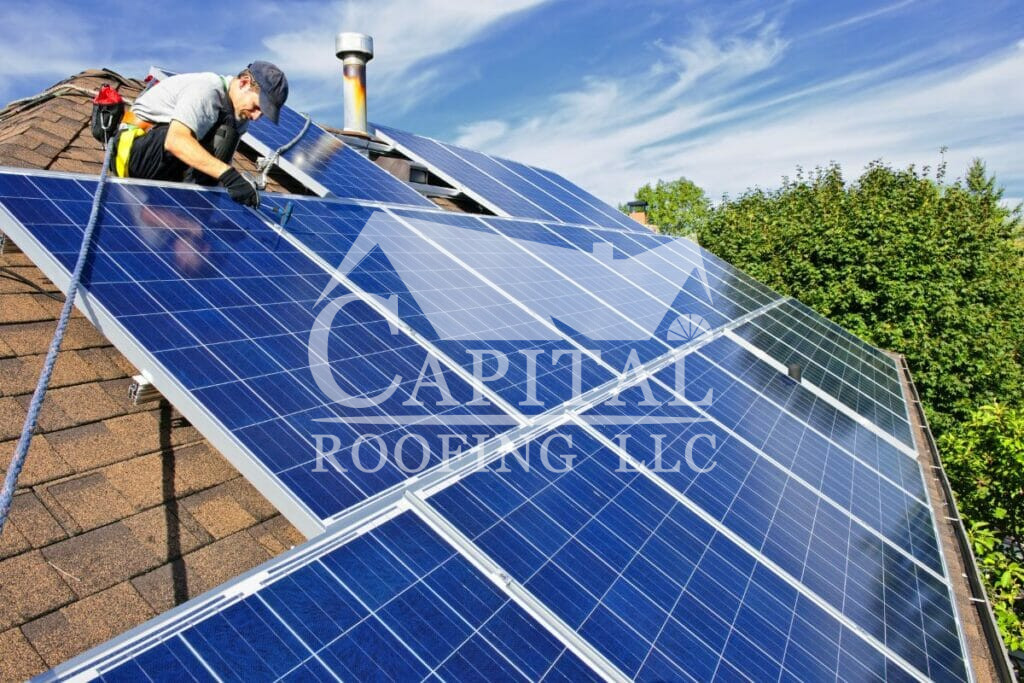
If you want to install solar panels on your garage roof, it’s much easier with a flat or low-pitched roof. With advances in technology, solar panels are becoming more affordable and accessible, making them a popular option for homeowners looking to improve their home’s energy efficiency. Utilizing solar energy can also decrease your carbon footprint and help you take advantage of the tax relief that comes with eco-friendly initiatives.
Hip Roofs

Hip roofs are one of the most popular designs for garage roofs. They form a pyramid-like shape, with a point or flat top and four slopes on each side. This design provides excellent protection against the elements and is particularly effective in areas with high wind or heavy snowfall.
Additionally, a hip roof can offer ample space for storage within the garage, which is important for some homeowners. You won’t need to build an attic, just add a few cabinets and racks!
Gambrel Roof
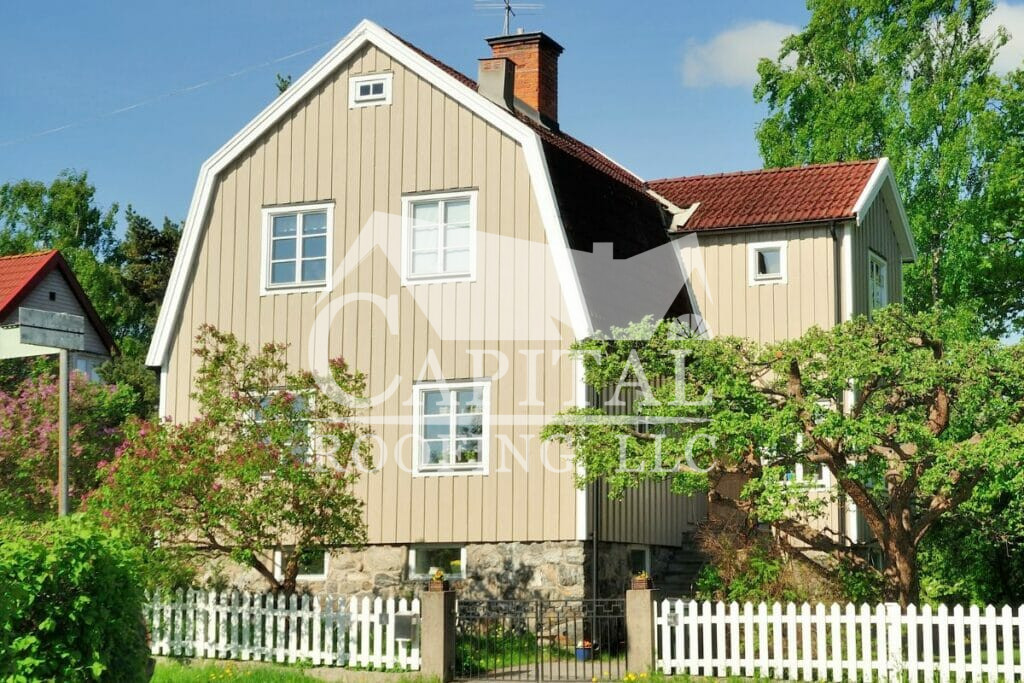
The gambrel roof is a classic and elegant design that features two slopes on each side of the roof, with the lower slope being steeper than the upper slope. This style has been popular for centuries and was often seen on traditional barns and farmhouses.
Gambrel roofs are incredibly durable and can withstand heavy snow loads and strong winds. The design of the roof distributes weight evenly, making it less likely to collapse under heavy snow. Also, the steep slope of the lower section of the roof helps to shed snow and debris more easily.
Lean-To Shed Roof
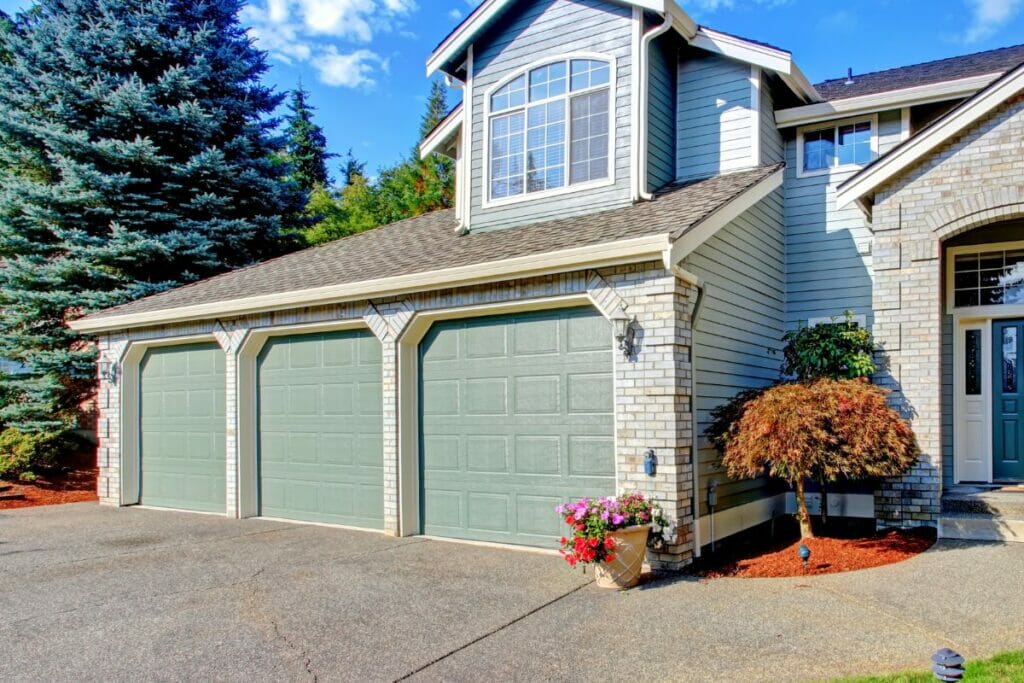
Lean-to roofs are a popular choice for narrow and small garages. This garage roof design features a single-sloping roof that connects to the side of an existing structure. Lean-to roofs are easy to install and require minimal maintenance, which makes them an attractive choice for homeowners on a budget. This type of roof is particularly useful for storing outdoor equipment and tools that require protection from the elements.
Once you’ve chosen the design of your garage roof, the next important decision is to choose the right materials for the construction.
Garage Roofing Materials
A roof is more than just a protective covering over your garage. It can add beauty, style, and value to your property, and the right roofing material you choose is a big factor in this.
Here are the top materials you can consider for garage roof installation:
Metal Roofs
A metal roof is a robust and reliable choice for a garage, as it can withstand extreme weather conditions and the test of time. Additionally, they require minimal maintenance, making them a hassle-free option for homeowners living in windy and snowy areas.
However, if your area is prone to hail, even the sturdiest metal panels will develop unsightly dents and scratches that may need frequent repair. Sturdy metal panels are also more expensive than corrugated metal sheets and asphalt shingles. Cheaper options like corrugated metal may not last as long and require frequent repairs.
Asphalt Shingles
Class 4 impact-rated shingles are a much better roofing option if you are looking for new garage roof shingles. These shingles are tested and approved to perform well in areas prone to heavy rain, snow, hail (up to 2 inches), and wind (up to 130 miles per hour).
For example, GAF Timberline HDZ and Owens Corning Duration Storm are two of the best roofing shingle ranges. These shingles can last over 30 years and come with impressive warranties. The best part is they have an affordable price point compared to other garage roofing materials such as metal, slate, and tile.
Wood Shakes
If you are seeking a natural and rustic look for your garage roof, wood shingles or shakes are a charming option. This natural touch of warmth and character cannot be replicated with any other roofing material. Moreover, wood shingles and shakes are now treated and coated with harmless chemicals that make them resistant to damage from pests, algae, and water.
If you are wondering which roofing option will be more cost-effective for your home, let’s get an idea of the garage roof replacement cost.
How Much Does it Cost to Replace a Garage Roof?
According to the Home Guide, the average cost to replace a garage roof ranges from $1,000 to $4,000, with the national average being around $1,100. However, this cost can vary greatly depending on several factors, including the size and complexity of the roof, the choice of materials, and the labor cost in your area. Additionally, if any damage or structural issues need to be addressed this may add to the overall cost of the project.
If you’re looking to save money on your garage roof replacement project, there are several strategies you can use.
#1 Choose cost-effective and durable materials, such as Class 4 asphalt shingles.
#2 Consider scheduling the installation during the off-season, when contractors may be more willing to offer lower prices, for example, during the fall or spring.
If you consider roofing a garage to be a DIY project, it’s essential to be realistic about your skills and experience. In case of storm damage, an insurance professional will be able to identify whether the roof has been installed by a certified professional or a handyman. Additionally, even minor faults during the DIY installation can give you a headache if the roof develops leaks and results in costly repairs.
If you need guidance on your garage roofing project in Oklahoma, we’re here to help you out.
Free Consultation & Estimate on a Garage Roof Replacement
At Capital Roofing, we’re part of the Oklahoma community, so we make it our duty to help make your home safer and more appealing. If you are looking for a garage roof installation service or expert guidance on your project, call us at (918) 260-4075. We will be happy to offer you a free consultation and estimate on your garage roof cost.
